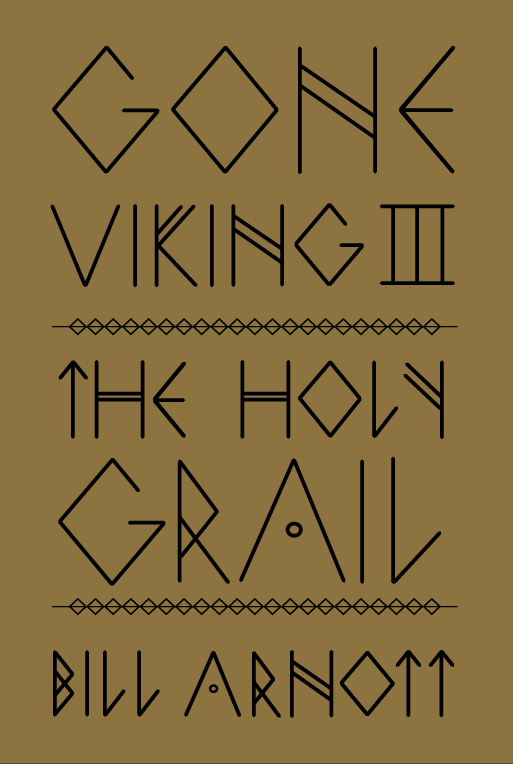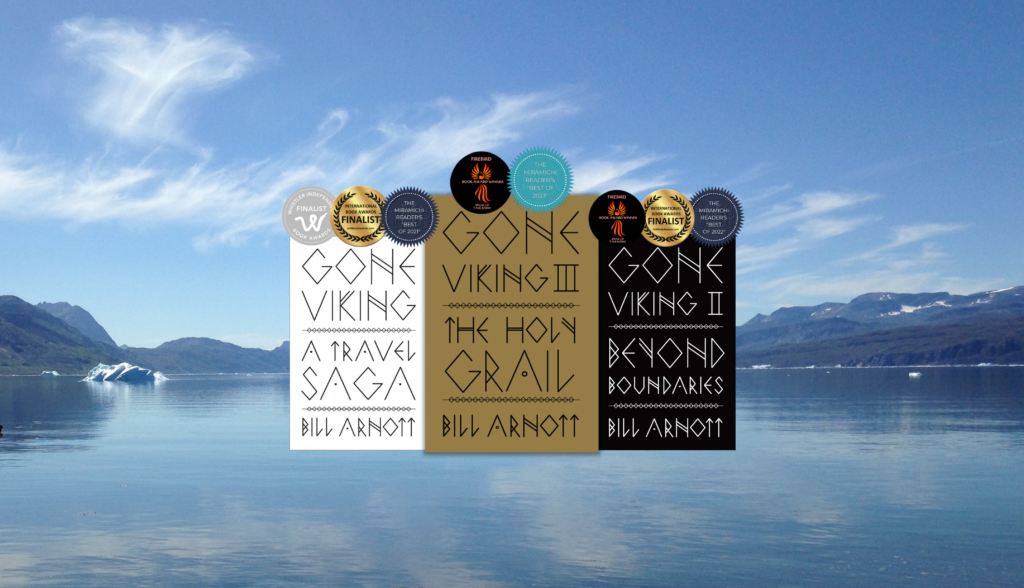

Do you hear from your readers much? What kinds of things do they say?
I’ve been extremely privileged to hear from readers around the world, invariably with kind things to say: how the Gone Viking travel memoirs are special to them, where they found them, where they enjoyed reading them, or who they’ve bought copies for, as gifts. It’s grown into a wonderful global group we affectionately call our #GoneVikingCommunity.
How do you use social media as an author?
Something I like about social media is connecting with readers, fostering a shared community. I’ve been delighted to see readers posting photos of themselves with copies of my books, often in fun or occasionally ridiculous locales. In addition to armchair travel and escape, the Gone Viking travelogues have ended up being used by many readers as pseudo-guidebooks, which I love. As a fan of travel literature, I do the same thing, enjoying great nonfiction set wherever I’m travelling.
What author in your genre do you most admire, and why?
There are a few. I consider Robert Macfarlane a master of the genre. Anna Badkhen is brilliant as well. Reading their work motivates me to continuously improve my craft.
What book (or books) are you currently reading?
Right now I’m enjoying Outlandish by Nick Hunt, his account of exploring Europe’s most unique landscapes. Thought-provoking, richly engaging nonfiction.
What books have you read more than once in your life?
I read Land’s Edge by Tim Winton every year, and I’ll reread Robert Macfarlane’s Underland next. Michael Palin’s titles also resurface on my reading stack regularly. I’m still surprised to find nuggets in each I’d forgotten or can reinterpret anew.
What do you like to do when you’re not writing?
When not writing I’m most likely reading, or outdoors: walking, hiking, running. But I’m usually thinking about writing. As poet Evelyn Lau, a mentor and friend, likes to say, “I spend my non-writing time getting ready to write.” True, and accurate.
What inspired the idea for your book?
Gone Viking III: The Holy Grail is the final book in the Gone Viking travel memoir series. Following the success of the first book, my publisher and I felt a trilogy made sense, and I knew “the story,” or in this case my travel expeditions, could be completed and effectively communicated in this manner. Each book being unique, yet building upon its predecessor. The inspiration for all of this came at a Viking Ship museum in Denmark, as I gazed at a stylized map on the wall, sweeping arrows in red showing where Scandinavian explorers had travelled. It looked like the whole of the world! At that moment I believed I could go there – follow all of it – and turn it into a remarkable odyssey. To my delight, now, many years later, I’ve completed that epic series of treks, which I share in real time with readers in each of the Gone Viking books.
What is the best money you’ve ever spent with regard to your writing?
I’ll refer back to Tim Winton’s Land’s Edge, his small, beautiful memoir. I found a copy in a little bookstore in Sydney, Australia. That book inspired me to start writing, and the first book I wrote raised a significant amount money for charity. Fast forward ten years, and I was able to tell this to Tim at a writers’ festival, thanking him not only for contributing to my own journey, but the fact he’d played a pivotal part in helping a great many families through the results of that charitable endeavour. It was an extremely special moment. Although I no longer remember what I paid for his book, it was, without doubt, the best money I’ve spent as a writer.
What is the most valuable piece of advice you’ve been given about writing?
Back to my mentor and friend, Evelyn Lau, who challenged me to always go further, and deeper with respect to content, engagement, and revelation. Despite being an overused analogy, onion layers come to mind. To keep peeling back, and to always push boundaries.
What, to you, are the most important elements of good writing?
I feel sensory engagement can make good writing great. For example, how evocative are the words? A cliché that applies is, “Don’t tell me, show me.” This encapsulates what I want to most frequently read, and write. Can we as readers lose ourselves in the words, feel what the narrator’s feeling? That’s good writing to me, something I believe readers will experience when enjoying the adventure, history and humour I share through my travels in the Gone Viking trilogy. With thanks to my publishing team at RMB Rocky Mountain Books, and to Bookshelf Café News.
***
Bio: Bill Arnott is the bestselling author of the Gone Viking travel memoirs (Gone Viking: A Travel Saga, Gone Viking II: Beyond Boundaries, Gone Viking III: The Holy Grail) and A Season on Vancouver Island. He’s been awarded by the Whistler Book Awards, ABF International Book Awards, Firebird Book Awards, The Miramichi Reader’s Very Best Book Awards, and for his expeditions received a Fellowship at London’s Royal Geographical Society. When not trekking the globe with a small pack and journal, Bill can be found on Canada’s west coast, where he lives between mountains and sea on Musqueam, Squamish, and Tsleil-Waututh land.